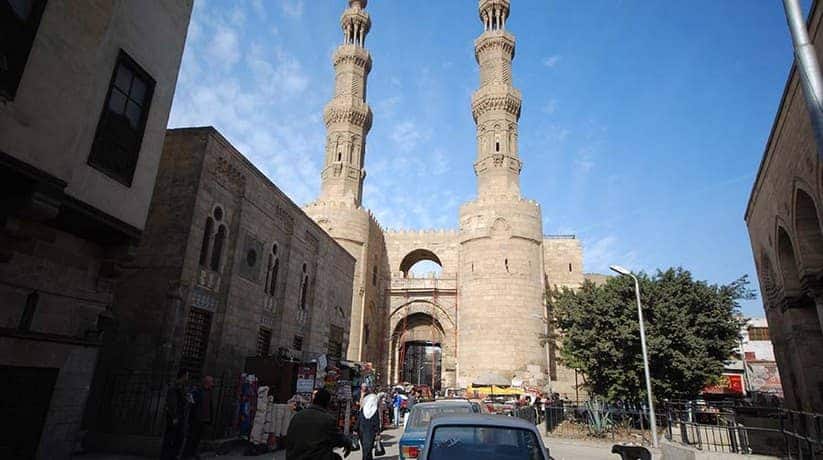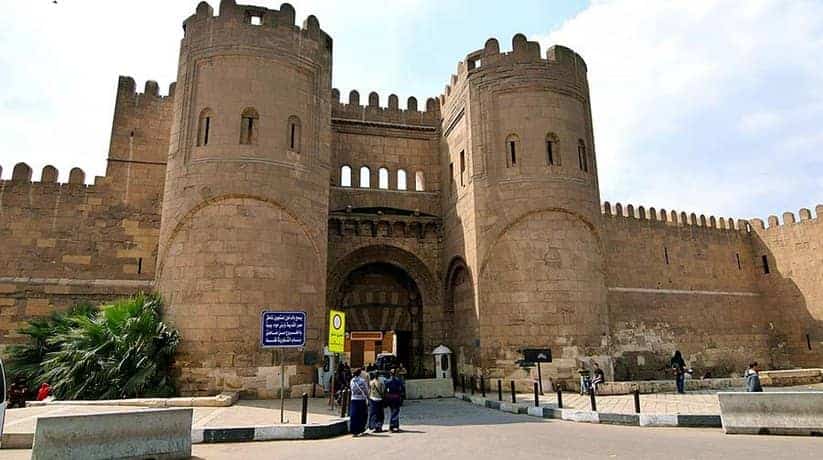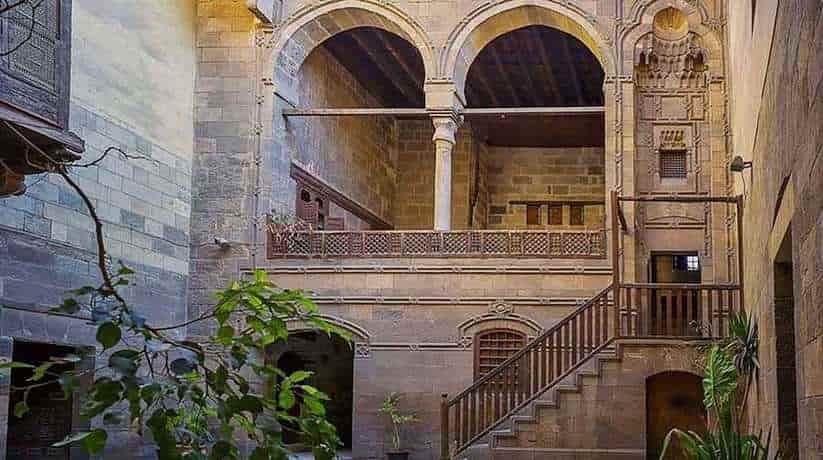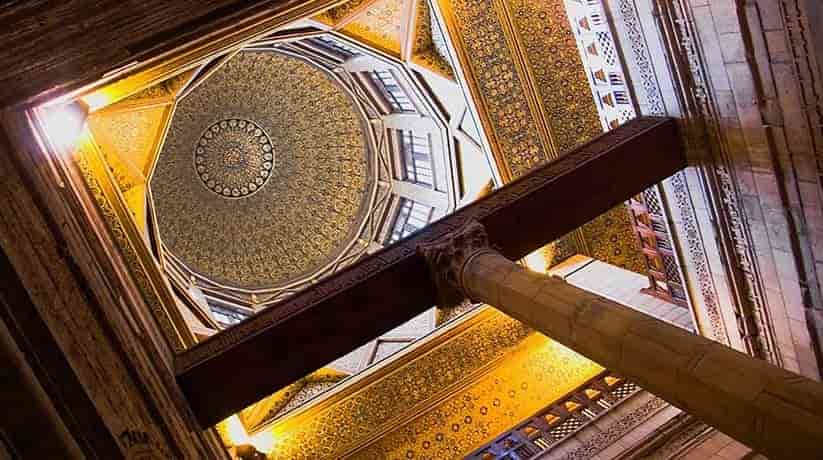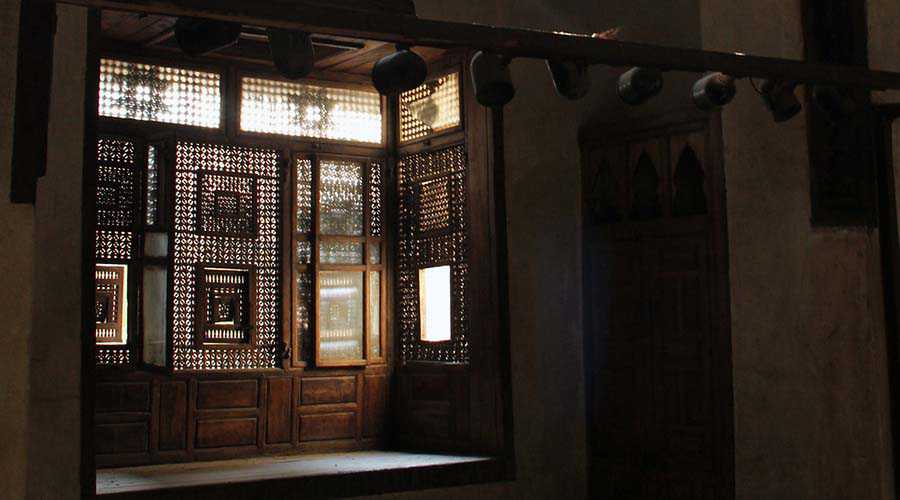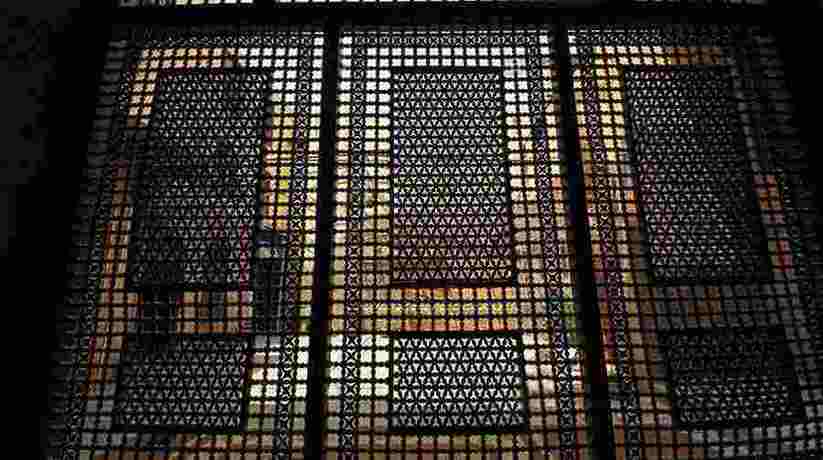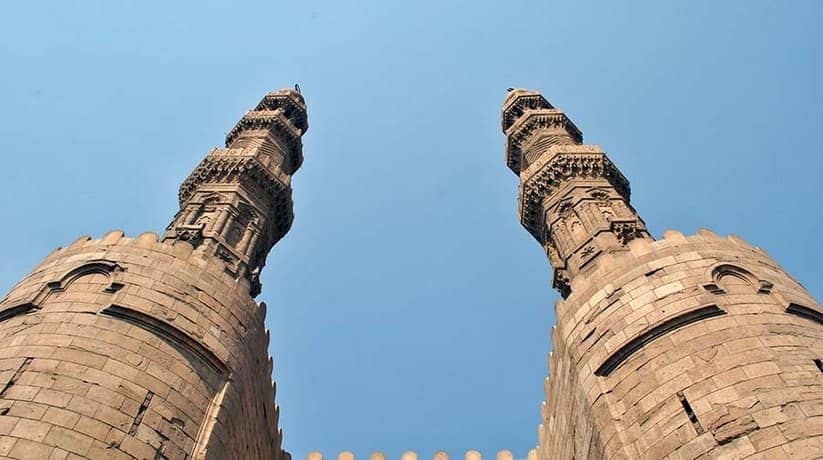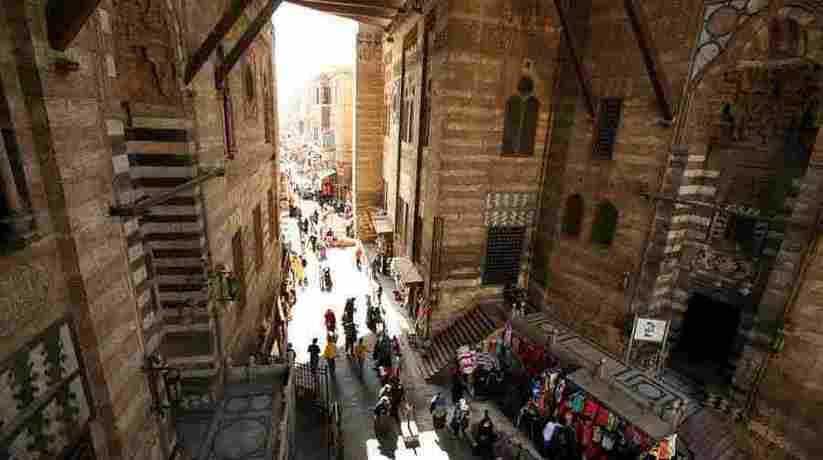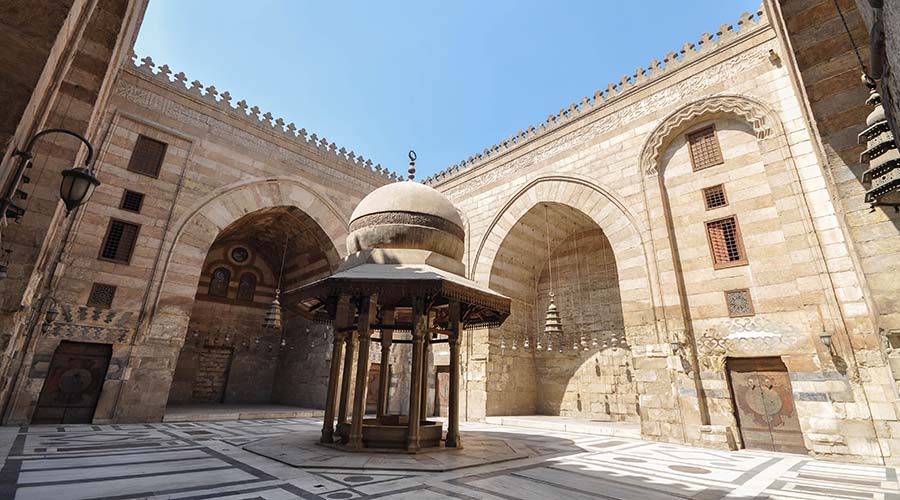Other Islamic Cairo Egypt tours, prices, booking, reviews
Other Islamic Cairo represented by Al Ashraf Barsbay complex. The complex built in 1432 on Al Mu’izz street in Cairo. Sultan Al Ashraf Barsbay ruled Egypt from 1422 until 1438. Madrasa means school and Khanqah means hospital. They built at the complex in Northern Cemetery of Cairo. It was a few years after he built his complex. The complex located south of Sultan Qalawun complex. The Khanqah contains three mausoleums.
The Other Islamic Cairo also represented by Al Ghouri complex. The complex built as a funerary complex established by Sultan Qansuh Al Ghouri. In fact, the complex built between 1503 and 1504. It was in the Fahhamin quarter on Al Mu’izz street in Islamic Cairo. There was a clear decline in the quality of craftsmanship. It was particularly in stone carving and marble inlay during his reign. The complex is an interesting architectural composition.
Further details about Other Islamic Cairo:
The Other Islamic Cairo also represented by Al Harrawi House which built in 1731. It is one of the fine examples of the Islamic houses which represent the Ottoman era. The house named after its last owner, Abdel Rahman Al Harrawi. He was a Doctor of Qasr El Ayini Medical School. The house located in the heart of a well known quarter in Cairo which behind Al Azhar Mosque. The Other Islamic Cairo also represented by Al Salih Ayyub complex. The complex located on the famous Moezz Street in Cairo. It dates back to the mid-13th century.
He died defending Egypt against the Crusader attack that led by Louis IX. Furthermore, he was the grandson of the more famous Salah Al Din Ayyub, known in the West as Saladdin. Before his death, he built a rather unique school (madrasa) between 1242 and 1244. He then built a mausoleum. They now called Al Salih Ayyub complex. Other Islamic Cairo also represented by Al Zahir Barquq Madrasa. It stands next to Sultan Al Nasir Muhammad madrasa. It is in a street of Al Mu’izz in Nahhasin district in Islamic Cairo. The Madrasa dates back to 1384.
More details about the sites:
The Other Islamic Cairo also represented by Amir Sarghatmish madrasa, mosque and mausoleum. They located in Saliba Street in Cairo. In fact, they are just behind the Ahmed Ibn Tulun mosque. Gayer Anderson museum located to one side of that mosque. The Madrasa located on the other side. Madrasa is an Arabic word means school. In the Islamic era, it supports of higher Qur’anic studies, prophetic traditions and jurisprudence. Other Islamic Cairo also represented by Bab Al Futuh which means the gate of opening. The gate built in 1087 by Badr al-Gamali.
The Other Islamic Cairo also represented by Bab El Nasr which means gate of victory. It is a massive gate in Cairo, Egypt. In fact, it is one of famous three massive gates. Al Gamali was governor of Acre in 1074. The Fatimid caliph, Al Mustansir called him to put down a revolt. The revolt was of the Turkish military commanders and their troops. After executing the rebels, Al Gamali’s first task was to reinforce the defenses of Cairo. Besides to rebuild Gawhar’s brick wall, which had collapsed. He did so with stone which marked the beginning of a newly cultivated taste for stone in Cairo.
Further details about the sites:
The Other Islamic Cairo also represented by Bab Zuweila. The gate is one of three remaining gates in the walls of the Old City of Cairo Egypt. The gate also known as Bawabbat al-Mitwally during the Ottoman period. Sometimes spelled Bab Zuwayla. It indeed is one of the major landmarks of the city. It is the last remaining southern gate from the walls of Fatimid Cairo in the 11th and 12th century. Its name comes from Bab. Bab means “Gate”. Zuweila is the name of a tribe of Berber warriors from the western desert. They are members of which charged with guarding the gate. The Other Islamic Cairo also represented by Beshtak Palace. The palace situated on the Muizz Avenue in Cairo. It constructed by Prince Beshtak Al Nasiri in 1334.
In fact, the Palace is a structure and Islamic museum in Cairo. It signifies Arabic architecture in the historic period of time in Egypt. It has uncommon windows which covered with Mashrabiya. The 2nd floor chambers having sharp arches and stained-glass home windows. The Palace is almost complete in its actual shape. It has two stories, hall, a compact courtyard and built-in stables. They have a wonderful entrance opening onto a side avenue. The long facade acceded with lots of windows. They open on the hubbub lane in ancient Cairo.
More details about the Other Islamic Cairo:
The Other Islamic Cairo also represented by El Seheimy house. The house built by Abdel Wahab El Tablawy in 1648. In fact, the house purchased in 1796 by Sheikh Ahmed Al Suhaimi. He extended it by integrating several of the adjacent houses. Nowadays the house is the best example of a rich private house. It is especially after its restoration process. The house demonstrates a lot of arts in this period. Furthermore, the house tells about the period and how people used to live in the Ottoman period.
The Other Islamic Cairo also represented by Khan El Khalili. It once known as the Turkish bazaar during the Ottoman period. It now usually just called the “Khan”. The names of it and the Muski market often used to mean either. Khan El Khalili market built in 1382 by the Emir Djaharks El Khalili in the heart of the Fatimid City. In fact, Khan El Khalili and Al Muski market to the west comprise one of Cairo’s most important shopping areas. They represent the market tradition which established Cairo as a major center of trade.
Further details about the sites:
The Other Islamic Cairo also represented by Qanibay Amir Akhur complex. It belongs to Qanibay Al Sayfi. He was grand master of the horses during the reign of Sultan Al Ghuri. Moreover, he also known as Al-Rammah because he was famous for his horsemanship and using spears. His name is an Arabic word means the lancer. The complex sometimes known as madrasa of Qanibay Qura Al Rammah. It features a madrasa, mosque and a Sabil-Kuttab.
The Other Islamic Cairo also represented by Roda Island Nilometer. It located on the southern tip of Roda Island and faces Old Cairo. In fact, it has the properties of being one of the oldest structures in Cairo. In fact, the structures which have a link to Egypt’s pharaonic past. It built after the Arab conquest. The Nilometer and other Nilometers used to measure the flood levels of the Nile River. It is a heritage of Egypt’s distant past. Such structures doted the course of Egypt’s grand river. These types of devices continued to be useful up until the modern era when the Nile tamed by modern dams.
More details about the Other Islamic Cairo:
The right one leads at the end to the back of Al Aqmar mosque. The other one continues till the end of the street at the Bab Al Futuh. Other Islamic Cairo also represented by Sabil Kuttab Sultan Qaitbay. It is freestanding, elegant, and situated on Saliba street. Moreover, it is between Amir Shaykhu complex and the square below Cairo Citadel. Sultan Qaitbay ruled Egypt for some 29 years. He known as a patron of art and prolific builder. Of his many other structures, the best known is his mausoleum at the “City of the Dead”. It depicted on the one pound Egyptian note. His military edifices that crown the harbor in Alexandria.
The Other Islamic Cairo also represented by Sabil Umm Abbas. It built by the grand-daughter of Abbas I. Abbas I ruled Egypt from 1848 to 1854. Sabil Umm Abbas located in quite a remarkable spot off Saliba Street in Cairo. It is at the corner of the side alley Al Siufiya. Moreover, the same alley lies the Palace of Amir Taz. Sabil is an Arabic word means fountain. It provides the walker in the street with the fresh water. One who builds Sabil, aims to get closer to God according to Islam teachings.
Further details about the Other Islamic Cairo:
The Other Islamic Cairo also represented by Sultan Qalawun complex. The complex includes mosque, Madrasa, Mausoleum and Muristan. In fact, Madrasa means school and Muristan means hospital. Sultan Qalawun complex located in Al Muiz Le Din Alla Street. It is in the area of Bein El Qasrein in Cairo. The decoration of the facade and the interior plan highlight the influence of the Syrian style on the complex. The inscription on the complex highlight that it was Sultan El-Malek El-Mansour.
The Other Islamic Cairo also represented by Zeinab Khatoun house. The house is indeed one of the most remarkable houses left nowadays. It occupies a distinguished location at the back of Al-Azhar Mosque in Azhary alley. In fact, the house named after its last owner. Two other important houses are near to Zeinab Khatoun house. They are El Harrawi house and Sitt Wasila house. Most of Islamic houses had the same architectural design. They composed usually of a central open courtyard around.


